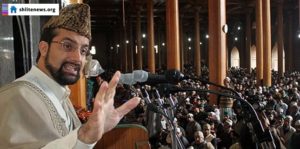
Sect formation is not peculiar to the religion of Islam; however, the sectarian violence demonstrated all along in the Muslim world is a new phenomenon. What is happening between Shia and Sunni in a different nation of the world is less a result of theological dispute than the politics of the time in which Saudi Arabia and Iran are engaged in a deadly battle for ideological supremacy and political leadership over the Muslim world. A bitter power struggle demonstrated pathetically all along the Middle East, Pakistan and other Muslim states.
In the midst of all the violence, Kashmir seems to be the only beacon of hope. In Kashmir, the Shia sect of Muslims constitutes little less than a half of the population in Kargil district of Ladakh region, while Kashmir valley also has a significant population of Shias in certain areas of district Srinagar, Budgam, Baramulla, and Anantnag. However, it is dicey to point out their exact population figures since census data is not collect on such denominational basis. Although doctrinal disputes between Shia and Sunni in Kashmir are same as elsewhere, it has not translated easily into sectarianism like in rest of the world. Though there have been reports of sectarian violence between them particularly in Kargil, however, the causative agent has been local.
Sectarianism in Kashmir had the entire wherewithal to flare up but didn’t, well the reasons for this are not far to seek, although they can’t be exhaustive.
Islam in Kashmir has been a late entrant. Sufis saints, mostly proceeded from Iraq and Iran, the springboards of Shi’ism, and were successful to spread the new faith in Kashmir where it supplanted Hinduism and Buddhism. Sunni variety of Islam is said to have been spread by Mir Muhammad Hamadan from khatlan, a place in modern-day Iran. While at the same time Shia teachings in Kashmir valley and Ladakh is said to have been propagated by Shamas-Uddin Iraqi hailing from Iran. Most of the Sufi saints had great reverence for local traditions, folklore, and language. The Sufi syncretic tradition of peaceful co-existence has all the more contributed in containing the violence against the Shia because it does not glorify the violent culture. Most of the strident Sunni denominations like Deobandi, Wahabi which have animosity against Shia sect was yet to emerge on the religious landscape of Kashmir. This is how the peculiar framework of a tolerant, secular local society emerged what has been crafted as Kashmiriyat. It needs to be mentioned here that ISIS has been able to mobilize people all long the Arab world that has been the bastion of Wahabi ideology.
As India emerged as an independent State, more than half of the Jammu and Kashmir was also integrated with India. The Indian state declared secularism as an official ideology of the State. Such a state didn’t regulate the private lives of people. So neither Sunni nor Shia sects have to view each other as demons trying to enforce the Islamic laws on one another; unlike the situation in Pakistan wherein a quest to keeps Islam as an ideology of Pakistan has sought to impose a Sunni variety of Islam upon Shia creating resentment among Shia community. A Sunni variety of Islam in Pakistan has been equated as real Islam, and all those challenging it are in the process of being declared apostates.
Hurriyat, an umbrella organization of groups seeking freedom from India, has been in Kashmir since the early 80s. It has a loose control over the protest politics in the state. But Hurriyat has not been an all exclusive bastion of Sunni groups. Shia community is represented as well by Iftikhar Hussain Ansari, Aga Syed, etc. It has a significant and vocal representation in all different factions of the Hurriyat organizations. Hurriyat has acted as a modulator in Shia-Sunni conflict. If Syed Ali Shah Geelani and Omar Farooq use all their organizational and charismatic power during Muharram procession to call for restraint from all sides and any untoward incident is deflected as the politically motivated action of India to weaken the movement.
Some of the constituencies not only in Ladakh but the Kashmir valley as well have large Shia electorate base, and none of the political parties in the State can neglect them while distributing the tickets in the elections. The phenomenon of the joint electorate has made it all the more necessary for the different political leaders to seek votes across the sect spectrum and secularize their manifestoes. Shia community has fair political representation in all state parties. As a result, most of their grievances find a solution through the political process rather than blocking them to find vent through violence.
Most of the militant organizations like Harkat-ul-Islam and Le.T have had anti-Shia discourse not only in Pakistan and but also in Afghanistan. The insurgency that erupted in 1989 in Kashmir took the Indian establishment by surprise has been going on unabated. Most militant groups which have clout in the Valley are from the Sunni sect. The insurgents view Kashmiri people resisting Hindu dominated army. Therefore, Islam has been presented as a unifying monolithic force against the India state. It has contained the conflict from escalation.
Moreover, neither Sunni nor Shia have escaped from ‘daily destiny effects’ like violence, brutalities, daily humiliations, human rights violations. The conflict has acted as unifying force rather than exacerbating the conflict.

Good. In fact, the kashmiri culture largely projects a consensus based approach of the two theologies
Grear article. Now it is hoped that Kashmiri Muslims will understand and accept their Hindu past and also that they learn to integrate this historic fact into their everyday lives. If only Islam is projected and not also Hinduism, there will never be peace in the Valley.
Good post!
Great post!